Table of Contents
Prokaryotic and Eukaryotic Chromosome:
Discovery– Chromosomes were discovered by Hofmeister in 1848 in pollen mother cells of Tradescantia. The term was coined by Waldeyer in 1888.
Definition- These are thread-like structures that are responsible for the transmission of character from parents to offspring.
Unique Feature- The most important feature of a chromosome is that they have the potential power to replicate and form new copies of its own type.
Bacterial Chromosome (Prokaryotic Chromosome):
The bacterial chromosome is located in the cytoplasm because there is no nuclear membrane and hence these chromosomes are circular or ring shape without any free end. The chromosome contains double-stranded DNA molecules which are about 1.2mm in length. The Genetic material of bacteria is called Nuceloid and it bears very few genes i.e. 1.2mm DNA of Escherichia coli bacteria contain 2500 genes.
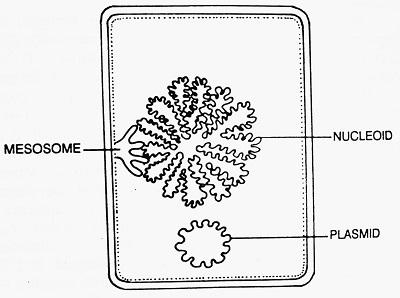
Plasmids- were first of all discovered by Hayes and Lederberg in 1952. Plasmids are the extrachromosomal segments that are located in the cytoplasm of bacteria besides the main chromosomes. Plasmids are again ring-shaped, circular and have double-strand DNA that carries the genes for fertility factor, for resistance and for the production of bacteriocin (colicin production). These plasmids hence are called F-plasmid, R-plasmid and Col-plasmid. This plasmid is easily extracted from bacteria and is used for recombinant DNA technology (rDNA).
Importance of Plasmids- (i) It is used in the formation of rDNA and its introduction into a particular host. (ii) It is used for the improvement of various breeds of plants and animals. (iii) Plasmid when injected into a particular host the later develops resistance against other bacteria. Hence become disease resistant.
Eukaryotic Chromosome:
The chromosome that is present in the nucleus are called eukaryotic chromosome but no doubt cell organelles of eukaryotic chromosome like mitochondria also contain chromosome. Chromosome present in a nucleus are linear and chromosome present in mitochondria are circular and have no end free. Eukaryotic chromosomes are elongated and contain many genes as compare to prokaryotic chromosome.
Morphology of Eukaryotic Chromosome- Morphology can be studied under following headings-
Shape- The shape of a eukaryotic chromosome is different in different stages of the cell cycle or cell division. For example- during interphase, the chromosome is a very long, elongated threadlike coiled structure and are not visible but during the metaphase stage, the chromosomes are rod-shaped are clearly visible. During telophase, the chromosomes divide at the centromere and become v-shaped.
Number of Chromosomes- The number of chromosomes is different in a different organism but however the average number lies between 8-46. The number of chromosome in an organism does not reflect their evolution but however, the chromosomes are the structures that bear genes for body activities.
The chromosomes number of different species are as under-
- Cat- 38 chromosomes.
- Dog- 78 chromosomes.
- Cow- 60 chromosomes.
- Fowl- 78 chromosomes.
- Horse- 64 chromosomes.
- Man- 46 chromosomes.
- Gorilla- 48 chromosomes.
- Pea- 14 chromosomes.
- Maize- 20 chromosomes.
- Mucor hiemalis- 2 chromosomes.
- Drosophila- 8 chromosomes.
- Amoeba Proteus- More than 500 chromosomes.
- Ophioglossum reticulatum- 1440 chromosomes.
- Drosophila- 8 chromosomes.
- Chimpanzee- 48 chromosomes.
- Radiolarian Aulocantha- 1600 chromosomes.
Physical Structure– The structure of a chromosome is best studied at metaphase when chromosomes are clearly seen. On the basis of structure, the chromosome is composed of the following parts-
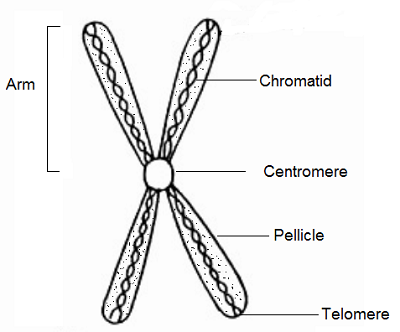
- Chromatid- Each chromosome has two elongated thread-like structures that extend from end to end. Such structures are called chromatids and each is made up of double-strand DNA. These chromatids are the sites for all the genetic information.
- Centromere- It is also called primary constriction. It is that region where the two chromatids are held and spindle fibres also attach to this structure during cell division.
- Arms- The part of the chromosome on either side of the centromere are called arms. If arms are equal the chromosome is called isobrachial and if arms are unequal the chromosome is called heterobrachial.
- Secondary Constriction- The chromosomes besides having the primary constriction (centromere) possess secondary constriction (clear zone) at any point of a chromosome. Constant in their position and extent, these constrictions are useful in identifying particular chromosomes in a set. These occur only in some chromosomes.
- Nucleolar Organiser Regions (NOR)- NOR are specialized areas where nucleolus can be formed. The chromosomes having NOR are called nucleolar chromosomes. In humans, they are represented by chromosome number 13, 14, 15, 21, 22 and additionally Y in males.
- Telomere- This term is applied to the terminal end of the chromosome. The terminal ends are known as telomeres.

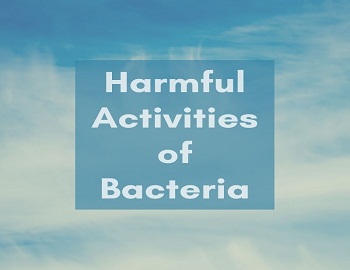

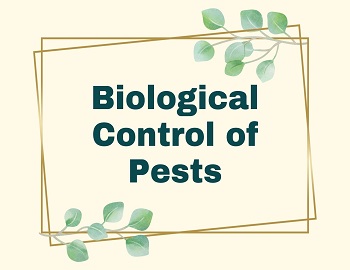
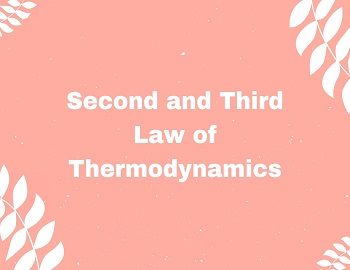


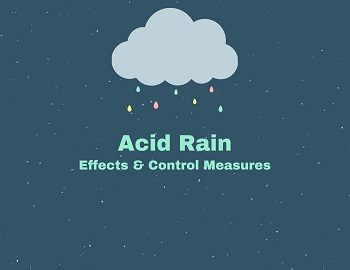
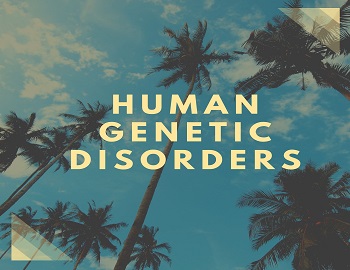
Comments (No)